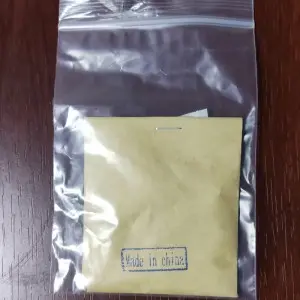Nov . 10, 2024 19:16 Back to list
Effective Techniques for Harvesting High-Quality Pear Pollen for Pollination Purposes
High-Quality Methods of Collecting Pear Pollen
Pollen collection is an essential practice in the field of horticulture and agriculture, particularly for the propagation of pear trees (Pyrus spp.). The quality of pollen directly influences fertilization success and fruit yield. Therefore, implementing high-quality methods for collecting pear pollen is crucial for any cultivator aiming for optimal results. This article explores several effective strategies for gathering pear pollen, ensuring both high viability and purity.
Understanding Pear Pollen
Before delving into collection methods, it is important to understand the nature of pear pollen. Pear trees typically produce a significant amount of pollen during the flowering season, which occurs in the spring. The pollen grains are small, rounded, and can vary in size and shape depending on the species and environmental conditions. High-quality pollen is characterized by its viability, which refers to the ability of the pollen to germinate and fertilize ovules successfully.
Timing the Collection
Timing is one of the most critical factors in collecting high-quality pear pollen. Pollen is best collected when the flowers are fully open and the anthers have begun to release the grains. This usually occurs in the early morning when the temperature is cool, and the air humidity is relatively low. Collectors should monitor the flowering stage, as peak pollen release varies between different varieties of pear trees. Observing local weather conditions and previous flowering patterns can also aid in determining the optimal collection period.
Selecting the Right Flowers
Choosing the right flowers is vital for ensuring high-quality pollen collection. It is advisable to select flowers from healthy, disease-free trees that are known for producing quality fruit. Additionally, selecting flowers from multiple trees can help maintain genetic diversity, which may enhance the overall vitality of the collected pollen. The ideal flowers for collection are those that are centrally located on the tree, as they tend to receive optimal sun exposure and attract pollinators.
Techniques for Collection
There are various methods for collecting pear pollen, each with its strengths. The most common methods include
high quality methods of collecting pear pollen

1. Direct Anther Collection This technique involves gently removing the anthers from the flowers using tweezers or small scissors. The anthers can then be placed in a clean, dry container. Care should be taken to avoid contaminating the pollen with materials from other flowers or debris.
2. Bagging Method Before the flowers open, bags made of fine mesh or agricultural cloth can be placed over the flower clusters. This method prevents unwanted pollination and allows for the collection of pure pollen once the flowers bloom. Once the anthers release the pollen, these bags can be shaken gently to collect the grains.
3. Pollen Traps Commercial pollen traps can also be employed. These traps are strategically placed around the flowering trees and designed to catch pollen as it is released. This method can ensure a larger quantity of pollen is collected, but it may require additional cleaning to avoid contamination.
4. Vacuum Collection A more advanced technique involves using a vacuum collection system. This equipment can be set up around the flowering area to suck in and filter pollen grains. While efficient, this method can be costly and requires careful calibration to capture only the desired pollen grains.
Storage and Viability Testing
After collection, proper storage is essential to maintain pollen viability. Pollen should be kept in a cool, dark place, ideally at low temperatures, to extend its shelf life. Cryopreservation is often the best option for long-term storage, involving storing pollen in liquid nitrogen.
Before using collected pollen, it is prudent to conduct viability tests. Simple germination tests can help determine the percentage of viable pollen before application. By mixing collected pollen with a suitable medium, you can monitor germination rates to assess quality effectively.
Conclusion
Collecting high-quality pear pollen is a meticulous process that requires attention to detail and appropriate techniques. By timing the collection properly, selecting the right flowers, employing effective collection methods, and ensuring proper storage, cultivators can enhance their chances of successful fertilization and maximize fruit yield. Whether for research, breeding programs, or commercial fruit production, investing effort into quality pollen collection will pay off in fruit quality and quantity.
-
Pollen Peach Tree for Pure Pollination and High-Quality Peach Pollen
NewsJul.30,2025
-
Premium Cherry Pollen for Pure Pollination & Different Types
NewsJul.30,2025
-
Artificial Pollination Solutions for Various Plant Pollen Types
NewsJul.29,2025
-
Artificial Pollination Solutions for All Plant Pollen Types
NewsJul.29,2025
-
Premium Plant Pollen for Pure Pollination & Pollen Block Solutions
NewsJul.29,2025
-
Artificial Pollination Solutions for Efficient Crop Yields
NewsJul.28,2025